My 1940 LaSalle
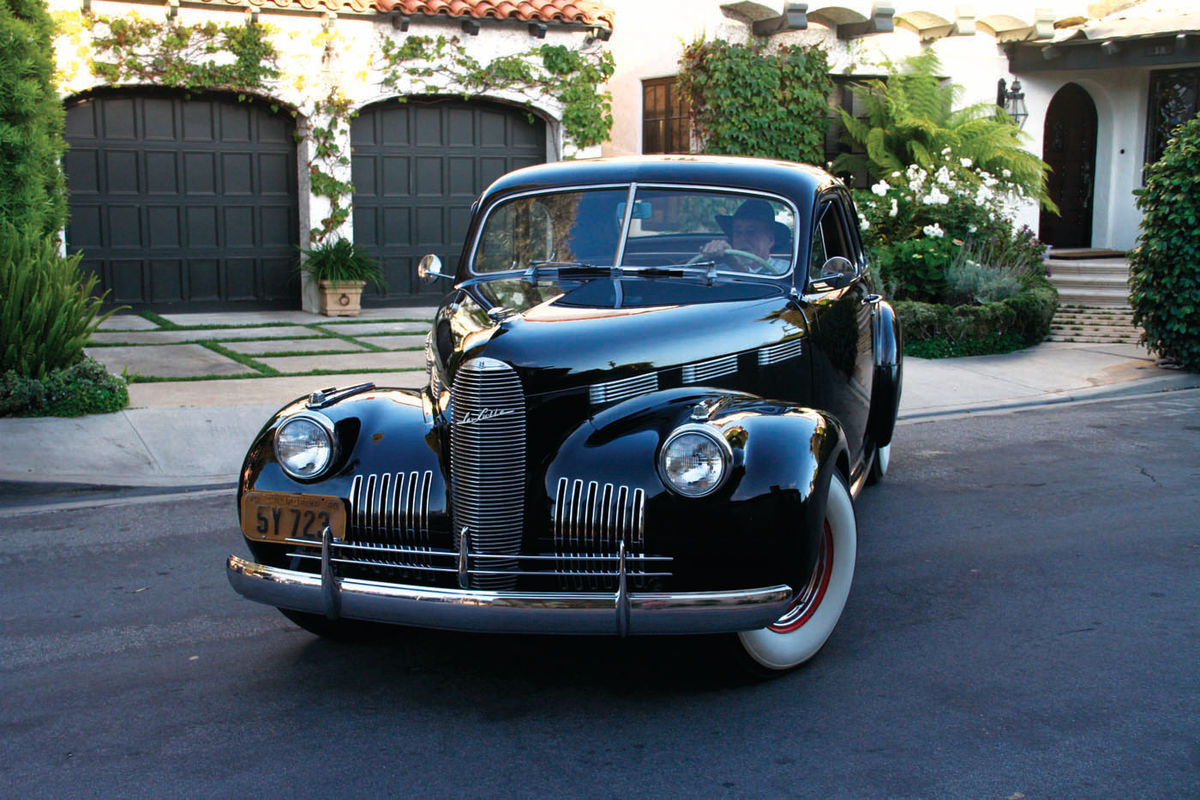
After More Than Three Decades, Our Mechanic on Duty Writer Got the LaSalle of His Dreams…A Well-Preserved Original.
The first time I saw Paul Schinnerer’s 1940 LaSalle Series 52 Special coupe back in 1983 I fell in love with it. Its sensuous curvy body, distinctive grille, and the throaty rumble of its big V-8 were magic to me. Paul also has two 1930 Cadillac V-16 classics that are masterpieces in their own right, and each one is worth more than my house, but that LaSalle coupe was like a modernist sculpture on wheels. It was sheer beauty from any angle. I told Paul at the time that if he ever wanted to sell it to give me a call.
A Three-Decade Wait…
Thirty-four years later Paul contacted me. I was 7000 miles away in New Zealand, but I arranged a wire transfer then and there without even consulting my spouse. That normally would have been a dangerous mistake, but she knew well how much I loved that car. Besides, she would have just done something silly with the money like replacing the carpeting in our house or paying health insurance premiums.
Buying Paul’s LaSalle was actually a lifelong dream fulfilled. You see, my father was in the Navy during World War II and was stationed at Treasure Island near San Francisco. I was four years old at the time, and my mother and I stayed with my great aunt Dolly nearby in order to see him off on a voyage that ultimately took him to Iwo Jima, Okinawa and finally Tokyo Bay. Aunt Dolly was well-to-do, lived in a big house, and drove—you guessed it—a 1940 LaSalle. It was the most beautiful car in the world, and from that time on I wanted one.
Driving a WellPreserved Original
Even though Paul’s LaSalle had only done 7000 miles in the last 15 years it started easily as soon as fresh fuel got up to the carburetor. I had learned a lot about car care and restoration from my mentor Paul over the years. He is a well-known restorer, electrical whiz and mechanic in his own right, and he had taken excellent care of what was a well-preserved original car. It is not perfect, but after 78 years it is in extraordinary condition.
The mostly original interior has that smell that cars of the era had. It is a mélange of old wool upholstery impregnated with crankcase and fuel fumes and cigarette smoke. Suddenly I am back with my folks, going to church on Sunday, and my dad is puffing on a Lucky Strike while mom is making sure the netting on her hat is properly arranged.
I pull the column shifter into reverse and back down the driveway. This car is big. Looking out over acres of hood, I see that art deco nose ornament in the distance and aim it in the direction I want to go. I wrestle with the big steering wheel, sans power steering, while the car is barely rolling. Once I am lined up I give it the gas and that 346-cubic-inch 150-horsepower flathead V-8 tank engine comes to life and acceleration is surprising. I say tank engine because World War II Stuart tanks used two of these mills to power them.
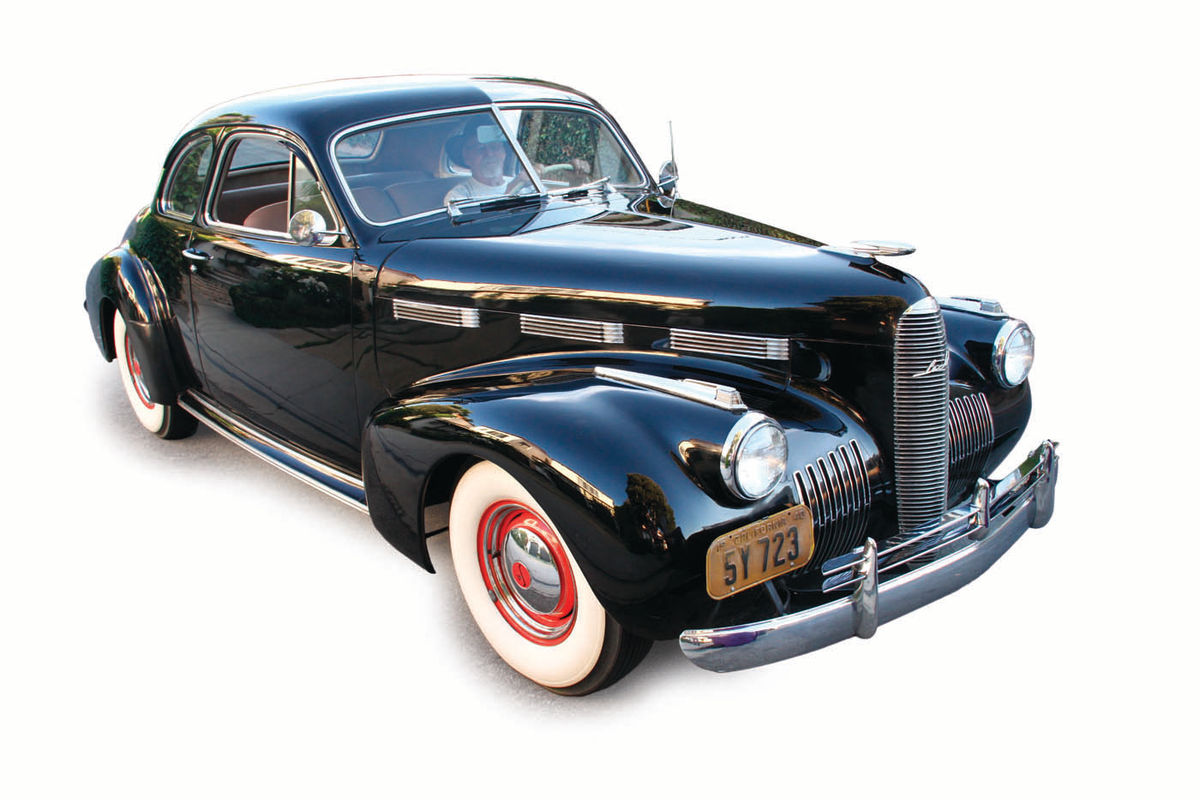
A Replacement Engine
It turns out that in the early ’50s, the LaSalle’s original 322-cubic-inch V-8 got tired, so the owner merely adapted a war-surplus tank engine, of which there were plenty after the war. In fact there is still a brand-new one listed on eBay as I write this. It is much the same as the automobile engine on the outside but it is punched out an eighth of an inch, and has better bearings and metallurgy than the original LaSalle engine.
As I run up through the gears the big V-8 makes that inimitable flathead V-8 rumble that has always been music to my ears. Paul added a fourbarrel carb in place of the original two-barrel a few years ago, and it makes a difference at higher rpm, though I may put the car back to original in the future.
Lasting Fame for Another French Explorer
The story of the LaSalle marque began when Harley Earl—arguably the father of modern auto design— was hired away from Don Lee Cadillac’s custom body section in Los Angeles to design a smaller sportier “companion” make for Cadillac for 1927, and was given only four months to do it. He borrowed heavily from the styling of the Hispano Suizas of the time, and added some handsome flourishes of his own. The result was a huge sales success.
The LaSalle moniker was a logical follow-on from the Cadillac brand which was named for French explorer Antoine de la Mothe Cadillac who founded Detroit. To continue in that French explorer vain, the new LaSalle was named for Rene-Robert Cavelier Sieur de La Salle who had explored the Great Lakes region a couple of centuries before.
During the pre-war period Paris was the center of fashion, style and culture for the western world, and many Americans considered French design to be the ultimate. Cadillac used that regard for things European when they made Earl head of design for all of General Motors and gave him his own styling section called the Department of Arts and Colours, with the British spelling being an intentional nod toward the continent.
Saved By a New Design
Sadly, 1940 was the final year for the Cadillac’s companion make, though it lasted longer than the even shorterlived Viking that was Oldsmobile’s companion from 1929 until 1931, and the Marquette for Buick in 1930 that lasted just one year. Pontiac was the only exception. It began as a companion make for Oakland in 1926 and wound up consuming its host in 1933. This flurry of companion makes started when the industry was booming in the mid-’20s, and ended shortly thereafter when the Great Depression reached its depths in the early ’30s.
While LaSalle lasted longer than most GM companion makes, it too would finally go the way of the others, albeit due to unique circumstances. In fact, LaSalle almost went the way of the Viking back in 1933. But the problem was LaSalle’s success, not its failure. The bean counters at GM concluded that it cost almost as much to build a LaSalle as it did a Cadillac, but the LaSalle commanded a lower price, which meant less profit for the division.
Also LaSalle’s sales success meant fewer Cadillacs were purchased, so the companion make was eating into company profits. The LaSalle was only saved for 1933 because Harley Earl was wandering around the design department one night looking at what his designers were doing, and spotted some sketches done by Jules Agramonte that were revolutionary. They drew directly upon the British streamlined beach racers, and were beautiful and exciting.
Earl waited until the end of the new model presentation in 1932 to present Agramonte’s work as the car General Motors was not going to build in 1933. It was so handsome and exciting that management changed their minds then and there, and the LaSalle marque was saved—at least for the time being.
The design thinking that went into the LaSalle was to make it a trendsetter, with new fresh exciting looks every year. As a result, design ideas were tried on the LaSalle first, and later adapted to the Cadillac and other GM automobiles. Later in the decade 23-year-old stylist Bill Mitchell’s prototype for the 1938 LaSalle was actually commandeered to become Cadillac’s Sixty Special, and that began the death spiral of LaSalle, even though most of GM’s management proudly drove them rather than the company’s other offerings.
Cadillac vs. Packard
The marque’s demise also partly came about because Packard debuted its junior mass-production model 120 in 1935 and it was a runaway success. In fact, it was so successful that Packard’s best year ever was 1937, when other car companies were collapsing into bankruptcy. The 120 was in no way comparable to the big handcrafted senior Packards, though they shared similar styling and the Packard badge. The 120 did so well that in 1937 the new junior models included an even more modest six-cylinder model that made it possible for people of modest means to own a Packard.
Unfortunately the tremendous success of Packard’s junior models resulted in Packard retreating from the high ground for a position in the mid-priced field. However it also caused management at Cadillac to go in the opposite direction as the Depression was winding down by making the mid-priced LaSalle the entry level Cadillac. It was marketing hocus pocus, but in the end Cadillac survived and Packard didn’t. The fact that Cadillac had General Motors to back it up helped a lot too.
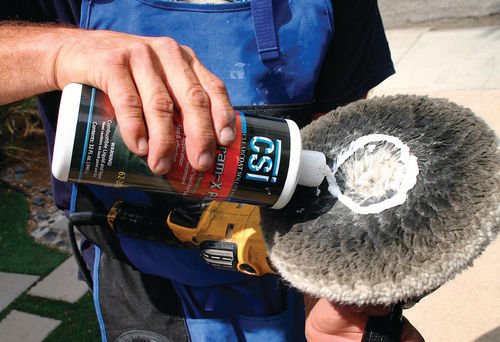
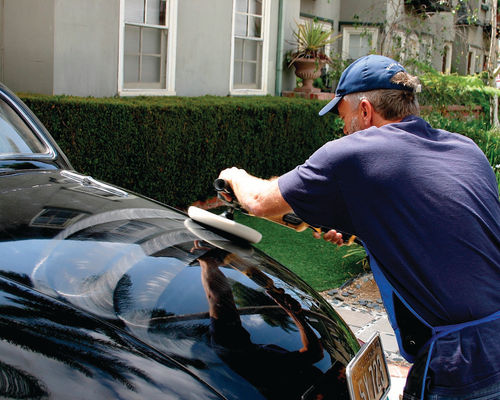
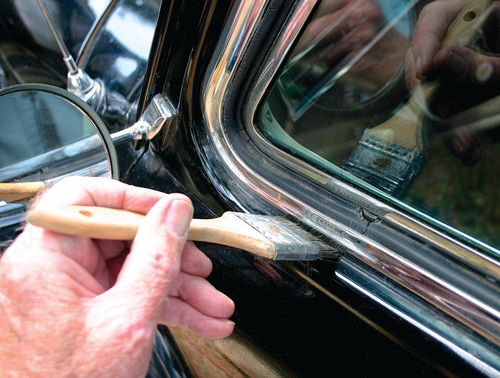

Ask the Man Who Owns Both
As the owner of this 1940 LaSalle and a 1940 Packard junior series car, I can say that in some ways they are polar opposites. Packard went for classic elegance and LaSalle went for flash and dash. LaSalle altered its look every year to be a trendsetter, but Packard’s styling was evolutionary. If you were a banker you drove a Packard, but if you were a movie star like Hedy Lamar you drove a LaSalle.
In 1940, Packards still had running boards and hoods hinged down the middle and opening at the sides, but LaSalle had a one-piece clamshell hood. You could still order a LaSalle with running boards, but most buyers didn’t. Also, Packard still had wood graining on the dash and window reveals, but LaSalle’s dash and trim was painted.
There were two series of junior Packards in 1940, which were the 110 and the 120, and there were two series of LaSalle as well. The lower priced one was the series 50, which was a bit smaller and more angular looking, and the other was the series 52 with the Torpedo Body, which was rounder and bigger. The series 50 looked more like the 1939 models, and the series 52 looked more contemporary though both had the same running gear.
Packard’s smoothness and silence can’t be topped, and the Packard Super Eight of that year was the fastest production car available. Also, Packards were available with Borg Warner overdrive, which gave them a better top end. But the bottom end and mid-range oomph of the contemporary Cadillac V-8 is impressive and its transmission is smooth, silent and nearly bulletproof.
Packard’s steering and front suspension was so good that RollsRoyce copied it, but the LaSalle is a bit of a handful until you get it rolling.
You could get air conditioning in the Packards, but Cadillac didn’t offer it until a year later. On the other hand, blinkers were built into the LaSalle, but were an extra cost option on contemporary Packards. Both marques had their virtues and both provided top-quality, reliable and long-lived transportation so in the end, it pretty much boiled down to the image you wanted to project.
Both cars are very comfortable for touring, though the LaSalle is a little roomier.
Both Cadillac and Packard were at a pivotal point by 1940. Cadillac had jettisoned its V-12 years before and 1940 was the last year for its V-16. And Packard had jettisoned its V-12, but both retained their big eights, though Packard’s was inline and a bit smoother. Both companies did very well during World War II. However Packard never regained the prestige it had before the war, and poor management decisions spelled the end of the venerable old company by the late ’50s.
I love both cars, although for long distances and high speeds I might choose the Packard thanks to its optional overdrive. However, for showing up at stylish parties and for red light races I would choose the LaSalle.
It is sad that neither brand survived despite all the marketing ploys and jockeying for market position. There is nothing made today that makes such a dashing sophisticated statement as a 1940 LaSalle. My collection is now complete… But that doesn’t mean the work is finished.
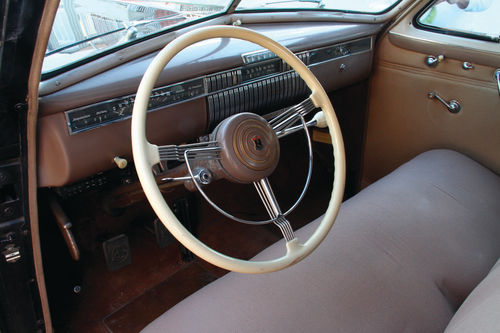
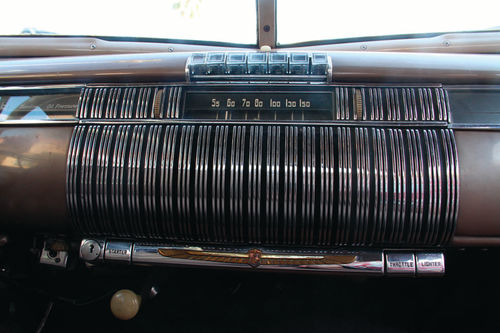

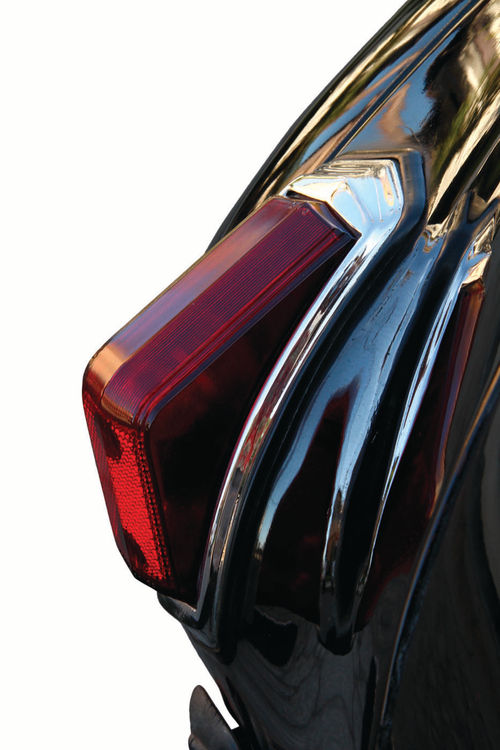
Preserving the Car’s Aging Finish
How do you buff out and polish an original pre-war classic without damaging or removing the existing paint? I asked myself this question when I acquired my LaSalle. As noted, it’s an original survivor that is too intact and historically significant to restore, but I do want to preserve and maintain it for the future.
The finish on the car is surprisingly good; indicating that it had been well cared for most of its life, but it has warn through to the primer in a couple of places and is pretty thin after 78 years. The car was finished at the factory using the nitrocellulose lacquer of the era too, and that has its own unique characteristics that need to be taken into account, such as the fact that it is hard like glass and can be shattered easily. But more to the point, nitrocellulose lacquer also just dries rather than curing by chemical reaction like modern finishes, so solvents will attack it.
I don’t know enough about the frailties of old finishes to risk taking matters into my own hands, so I called on Tom Horvath, my friend and co-author of our book: “Pro Paint & Body” published by Penguin Putnam. Tom studied chemistry at Cal Poly and came up with his own line of polishes designed for professionals that are a quantum leap ahead of most finishing products available.
Tom’s line of finishing products— CSI (Clearcoat Solutions INT)—do not contain solvents, so they would not soften or damage the old paint on my LaSalle. Also, the polishing compound it uses provides a subtle continuous cut rather than starting out as a coarse compound and diminishing to a finer cut as it wears out, as do most polishing compounds.
Tom’s products are not marketed in auto supply stores for the do-ityourselfer, but are available from Amazon on the Internet. They are not cheap, but professional products never are. You can also find or order them at automotive paint supply stores too. And if they save a nearly 80–year-old paint job and make it look almost new again they are well worth the extra outlay. I know this must sound like a major plug for a friend’s products, but I am featuring them because I don’t know of any other products that can do the job as well.
Going to Work
First wash the car carefully using a good car washing liquid. Tiny particles of grit will score your car’s paintwork and damage the finish when you are buffing. And if you live in a dusty area, go over the entire car with a tack rag—available from automotive paint and hardware stores—when you buff. Don’t press down on the rag. Just give the car a light dusting.
Always buff your car in a well-lit area. It is important to be able to study a vehicle’s finish from a number of angles, and that takes good even lighting. Dark-colored vehicles such as my La Salle can be a special challenge.
Begin buffing with a sheepskin pad on the buffer. Apply only a small amount of CSI Ceram X Polish (about the size of a quarter) to the surface or the pad, because this product goes a long way. Keep in mind that if your buffer is throwing polish everywhere, you are using too much compound. Also, place the spot of compound so it spins it into the pad rather than out of it and all over everything.
Set the buffer on the slowest speed, and slightly tilt it toward the working surface—this will get easier to do as time goes on—and work a surface area of about four square feet. Only use the 12 o’clock, 9 or 3 o’clock position on the pad to do the work. Also, tilt your buffer so you are buffing off of (away from) sharp edges along doors and hoods rather than onto them, so you don’t take off too much paint.
And though you do not moisten the pad with water before using CSI Ceram X, as opposed to other polishes, never let the buffing pad go dry of compound. Dry buffing is when there is no polish on the surface or on the pad. This condition will burn the paint and can be a very expensive mistake, especially if the paint is original and thin. Also, keep the buffer moving across the finish to avoid heat buildup, and don’t apply a lot of pressure. Just let the buffer and the compound do the work.
Never flat buff with the whole disk on the car’s surface because you can easily lose control of the buffer if you do. As you begin to buff a surface, you will discover that it comes to a beautiful polished shine in a very short time. And if you have buffed before, you will be surprised at how the CSI polish works much more quickly than other compounds because it is made with fine aluminum oxide rather than diatomaceous earth as with most cutting compounds.
Be critical of the entire area you are polishing, look for fine scratches, and continue to buff until you no longer see them. You will wind up with a highly polished surface, but upon closer inspection, you will still be able to see a very slight scratch pattern left by the pad and the polish.
There’s Still More to Do
Change to a soft foam pad and again apply a small amount of polish to the surface. Continue to buff about four square feet at a time as before. Again, you will develop a tremendous shine that really looks dazzling, but we’re not quite there yet.
At this point you will be looking at a beautiful deep finish with just a little residue or haze on the surface. This residue will come off quickly and easily, but do not be tempted to touch this surface with an ordinary terrycloth towel because it will scratch your work if you do.
To bring out the final richness and depth and even out the finish, wipe on a little CSI Q-7 Detailer. This can be wiped on and then wiped off with a micro-finishing towel quite easily.
Finally, apply the CSI Q-7 carnauba wax with no cleaners in it and rub it in gently, then polish it off with micro-finishing cloths. Don’t continue to apply wax to build up a thick coat though. The heavier the wax is applied, the more pressure is needed to remove it, causing more scratches, and contrary to what you might imagine, a thicker coat of wax won’t protect any better than a thin coat.
After that it’s time to take a few minutes to marvel at and enjoy your handiwork. It will look stunning!















